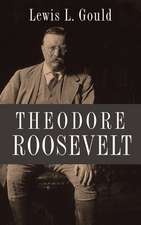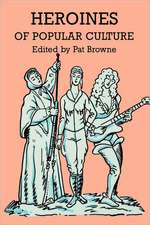A Critical Introduction to Queer Theory
Autor Nikki Sullivanen Limba Engleză Paperback – 30 sep 2003
A Critical Introduction to Queer Theory explores the ways in which sexuality, subjectivity and sociality have been discursively produced in various historical and cultural contexts.
The book begins by putting gay and lesbian sexuality and politics in historical context and demonstrates how and why queer theory emerged in the West in the late twentieth century. Sullivan goes on to provide a detailed overview of the complex ways in which queer theory has been employed, covering a diversity of key topics including: race, sadomasochism, straight sex, fetishism, community, popular culture, transgender, and performativity. Each chapter focuses on a distinct issue or topic, provides a critical analysis of the specific ways in which it has been responded to by critics (including Freud, Foucault, Derrida, Judith Butler, Jean-Luc Nancy, Adrienne Rich and Laura Mulvey), introduces key terms, and uses contemporary cinematic texts as examples.
| Toate formatele și edițiile | Preț | Express |
|---|---|---|
| Paperback (2) | 211.54 lei 3-5 săpt. | +43.39 lei 4-10 zile |
| EDINBURGH UNIVERSITY PRESS – 17 iun 2003 | 211.54 lei 3-5 săpt. | +43.39 lei 4-10 zile |
| NEW YORK UNIVERSITY PRESS – 30 sep 2003 | 225.71 lei 6-8 săpt. |
Preț: 225.71 lei
Nou
43.19€ • 46.90$ • 36.28£
Carte tipărită la comandă
Livrare economică 22 aprilie-06 mai
Specificații
ISBN-10: 0814798411
Pagini: 232
Dimensiuni: 167 x 233 x 13 mm
Greutate: 0.36 kg
Editura: NEW YORK UNIVERSITY PRESS
Descriere
A Critical Introduction to Queer Theory explores the ways in which sexuality, subjectivity and sociality have been discursively produced in various historical and cultural contexts.
The book begins by putting gay and lesbian sexuality and politics in historical context and demonstrates how and why queer theory emerged in the West in the late twentieth century. Sullivan goes on to provide a detailed overview of the complex ways in which queer theory has been employed, covering a diversity of key topics including: race, sadomasochism, straight sex, fetishism, community, popular culture, transgender, and performativity. Each chapter focuses on a distinct issue or topic, provides a critical analysis of the specific ways in which it has been responded to by critics (including Freud, Foucault, Derrida, Judith Butler, Jean-Luc Nancy, Adrienne Rich and Laura Mulvey), introduces key terms, and uses contemporary cinematic texts as examples.













